With the development of information technology, many samples of medical technology have become as common in our everyday life as refrigerators, vacuum cleaners and televisions. The number of devices that allow an ordinary citizen to monitor their health is growing. Until recently, it was possible to find a thermometer and a tonometer in the household. Today this arsenal has been replenished with digital thermometers and glucometers, electronic blood pressure monitors, oxygen concentrators and nebulizers. Home electrocardiographs are becoming more and more popular. With it, you can monitor your heart condition without leaving your home, remove and send your cardiogram to your doctor by e-mail, or print and grab it for your next appointment with a cardiologist. The editorial staff of the site "bestx.htgetrid.com/en/" offers you an overview of the best electrocardiographs (ECG) for 2020 ", compiled according to the opinion of buyers and experts.
Content
What is an electrocardiograph for?
The most important organ of our body is the heart, which is a complex pump that maintains pressure in the circulatory system. A pump failure in any closed loop means an alarm that can be eliminated by stopping and re-running or replacing the pump. Cardiac arrest automatically means the death of a person. Replacing this "pump" or its elements is also associated with a risk to life. But timely diagnostics and prevention will help to extend its working life, and hence the patient's life. By examining the electrical activity of this "pump", one can obtain sufficiently detailed information about its physical state, i.e. identify faults without stopping and opening it. The electrocardiograph is intended for this operation.
A bit of history
Interesting! The very first cardiogram was recorded by the English physiologist Augustin Waller in 1887. His dog became a patient, for which animal rights defenders took up arms against him. To avoid a scandal, the natural scientist put the next experiment on himself.
The device was extremely imperfect, the cardiogram was terrible. But that was the first step.
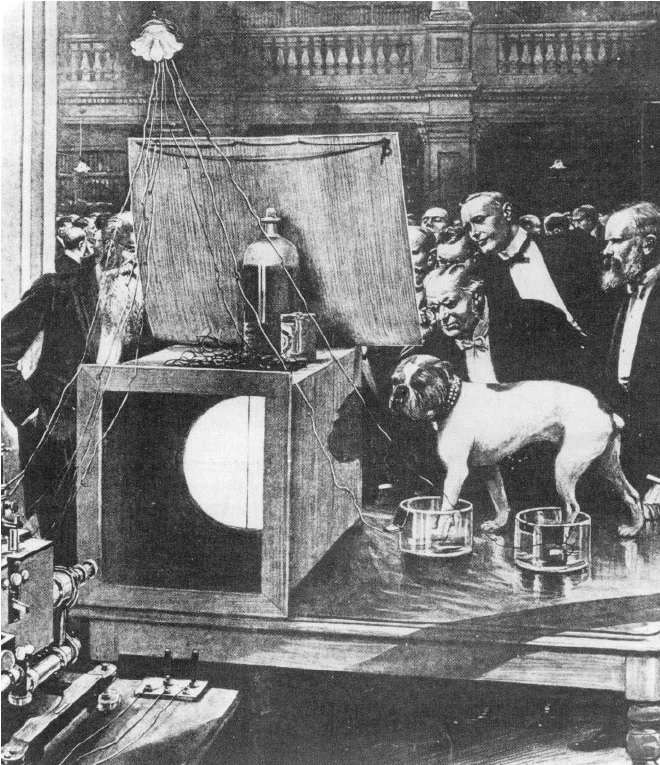
The Dutch physiologist Willem Einthoven became interested in Waller's work. In 1903, he managed to develop a string apparatus, which was supersensitive at that time, the main element of which was a thin quartz thread, through which current flows from electrodes fixed on the human body. The shadow from the vibrations of the string was recorded on photographic paper.
The scientist developed a method of three standard ECGs, placing electrodes in pairs to the left leg from the right leg and left arm, called the Einthoven triangle.
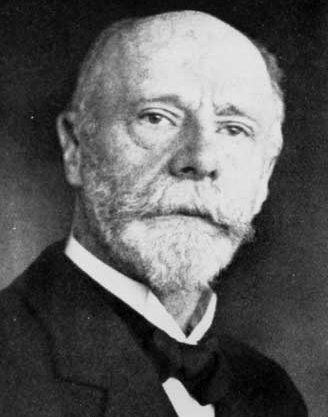
Physicians still use the description of various waves recorded on the cardiogram as a result of the process. And finally, he saw the similarity of the cardiograms taken from patients with the same heart ailments, finally making the ECG technique a diagnostic tool.
On a note! Einthoven's work in this area has been highly acclaimed by the international community. In 1924, Einthoven was awarded the Nobel Prize in Physiology.
How cardiographs evolved
The first serial device
Manufactured in 1911 by Cambridge Scientific Instrument. It was not inferior in size to a lathe, and a saline solution poured into three baths played the role of electrodes. The graph of the heart was recorded by a projection optical recorder on photographic paper moving at a certain speed.
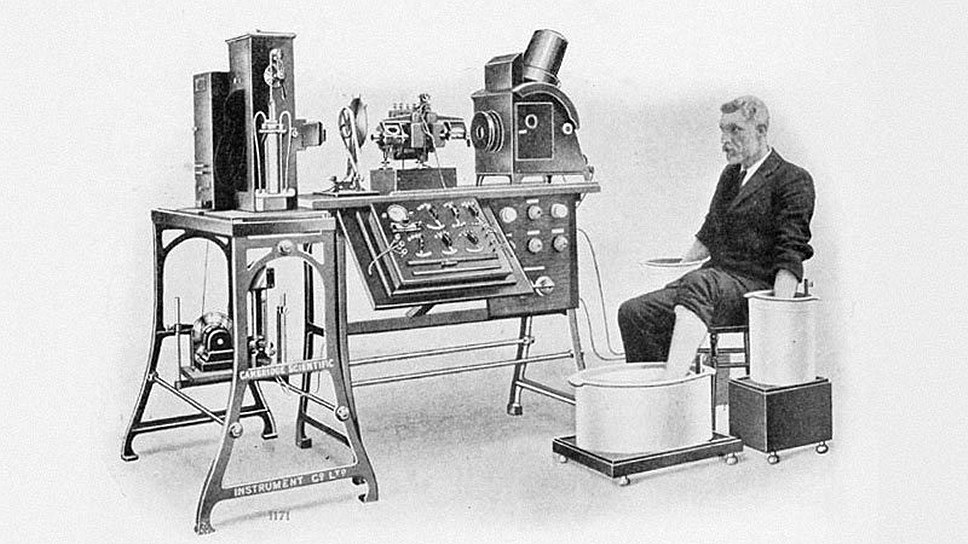
Modernization
In 1942, Goldenberg and Wilson were able to significantly improve the performance of the Einthoven apparatus. The device has become more compact and more accurate. It was equipped with three additional leads, single-pole and reinforced. They work in modern devices too.
A decade later, the cardiograph has undergone major changes:
- Added tube signal amplifier.
- The optical photo recorder was replaced by a compact device with an ink pen and roll paper.
- Overhead electrodes appeared.
The device was significantly reduced in size, but was still heavy, since it weighed at least 10 kg.
Portable ECG
In 1959, the American engineer N. Holder manages to create the first portable apparatus that fit in a small case. The device weighed only 2 kg.
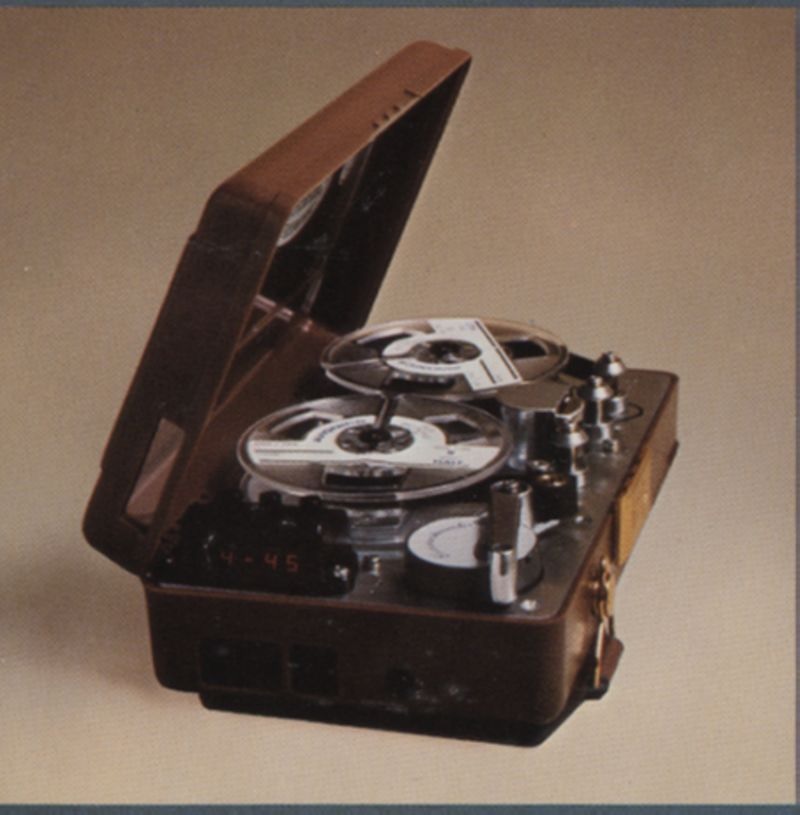
With the advent of semiconductors, it is finally possible to make truly portable devices, weighing no heavier than an average book volume, reliable enough to take on long trips. In the travels of Tour Heerdahl, the single-channel EK1T-03M was tested.
Modern cardio recorders
Today, cardiorecorders are more compact and multichannel, equipped with an automatic cardiogram analysis program, they can exchange data with a computer and print cardiograms on a compact thermal printer.
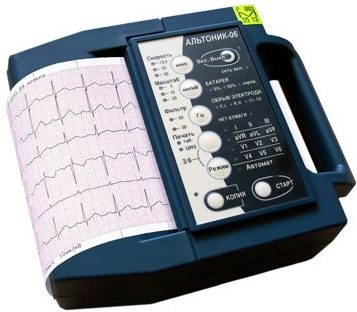
In addition to portable devices, wearable diagnostic devices have been developed and successfully used:
- Special disposable stickers for placement on the chest in the heart area.
- Bracelets with sensors that analyze heartbeats.
CardioCwark
A device with two sensors is not much different from a case for a mobile phone. Allows you to shoot, automatically analyze and send the decoded cardiogram to the attending physician using an iPhone at any time. To do this, you need to download and install a special application on your smartphone, put the device on the gadget, put your fingers on the sensors and sit without moving for a while. The device will do its job, automatically decipher the results, save them in the built-in memory and send them to the personal office of the attending physician. The user only has to wait for an SMS message with recommendations from a cardiologist.
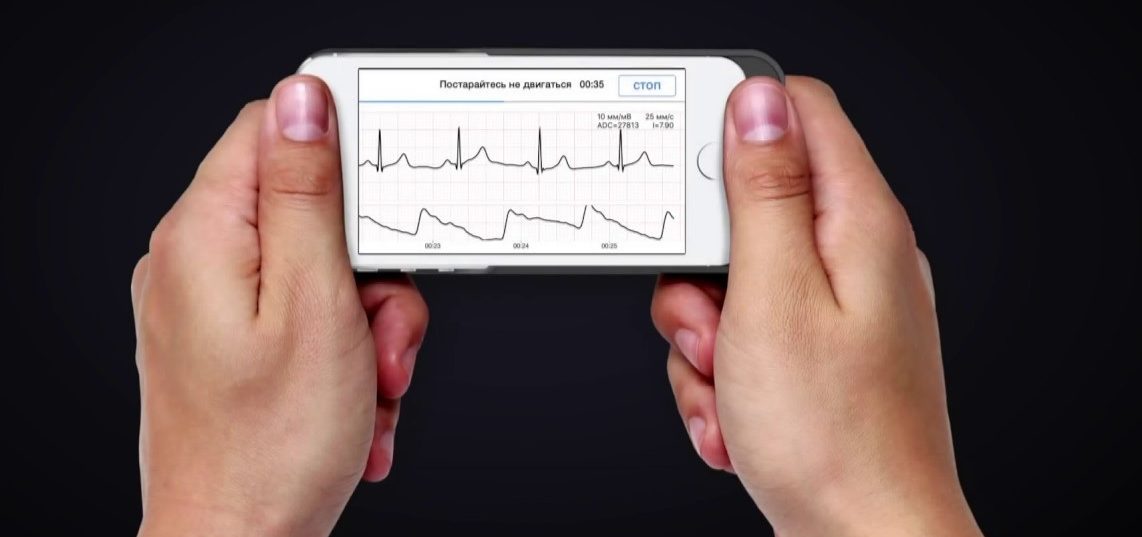
Cardio chair
New of the season. For self-imaging of a cardiogram, the patient needs:
- sit on a special chair;
- turn on the phone;
- press the start key of the device, enter personal data;
- grab the handles - electrodes and freeze for one minute.
The results are automatically sent to the attending physician. There is no need to make an appointment with a cardiologist, stand in line at the reception, and be distracted by a trip to the clinic.
How to choose an electrocardiograph for home
The task is difficult, even if the buyer is a cardiologist. First, let's get to know this device better.
EKG equipment composition
The cardiorecorder includes the following elements:
- Entrance block. Consists of electrodes (four - for the limbs, from one to six depending on the number of channels, for the chest), connecting cables, a lead switch.
- Signal amplifier. A device that provides the ability to analyze the recording.
- Lead switch in multichannel devices.
- A recorder that records amplified electrical signals on paper.
Electrocardiograph selection criteria
To make the right choice, you need to know what cardiographs are and decide in advance on the type of device.Devices can be portable and stationary, single and multi-channel, with or without display. Modern wireless models transmit data to a computer via Bluetooth.
Channel selection
One of the most important characteristics indicating the performance of the device. The cardiogram shows the state of all parts of the heart: atria and ventricles, valves, myocardium, aorta. Any cardiograph monitors 12 channels. But if a single-channel device records signals from each department in turn, then a three-channel device will record signals from three channels at a time in one "pass". Accordingly, a six-channel device will need to make two “runs” to record a complete set of signals. The twelve-channel device will be able to do all the work in one pass at once, i.e. twice as fast as six-channel.
Single channel cardiorecorder
Low-cost devices are most often used as diagnostic equipment for the home. They are often armed with ambulances. Simple, mobile, compact and lightweight, it is easy to operate and can be powered by mains and batteries. The advantages include its low cost. However, the feature set is limited.
Three-channel ECG
A device for 3 - channel output of the result of monitoring of cardiac activity, with automatic or manual start of the printing device (thermal printer). There is a function for entering the patient's personal data (surname and initials, age, pulse, etc.). Some models are equipped with a PC data transfer function. Three-channel ECG automatically determines the main indicators of heart activity without the participation of the medical staff.
Six and twelve channel models
Professional devices for public and private medical institutions. They have increased performance, large memory capacity and powerful batteries that allow you to take more than 150 cardiograms in a row and transfer them to a PC. With their help, you can get a more accurate picture of cardiac activity, accompanied by sound alarms in the presence of deviations from the norm.
Computer cardiograph
Recently, it has been in high demand among users. This is a modern digital 12-channel apparatus for express research. Developed based on Windows OS. The size and weight does not exceed a conventional smartphone. Batteries allow continuous operation for 10 hours.
Display availability
All things being equal, devices with a display should be preferred when choosing a home ECG. The operation of such models is more convenient. The cardiogram can be previewed on the LCD and then printed if needed. This allows you to reduce the cost of purchasing thermal paper, but also increases the cost of the device.
What else to pay attention to
- Choose between portable and stationary options. For home, it is better to choose a portable device. Saves space and moves easily to any room. For medical institutions, stationary models are more preferable. They are more productive, equipped with a significant number of useful functions that allow you to examine a large number of patients in a short period of time and get the most accurate analysis of the situation.
- Keyboard type. Film will last longer than traditional push-button. In addition, it is less dirty and easier to clean.
- Models with additional options are always better than highly specialized ones. The presence of various functions allows you to determine the duration of the QRS complex, teeth and intervals, automatically determine deviations and defects and inform the patient.
- The presence of a USB port or the function of transferring data to a PC via Bluetooth significantly expands the user's capabilities: archiving and viewing cardiograms, logging and analyzing the effectiveness of treatment.
Top ECG manufacturers
Caredioline
Manufacturer from Italy. On the market since 1950. Popular three, six and twelve-channel models of this brand are in high demand among users in more than 50 countries around the world.Reliable and versatile, embodying all the latest technical solutions, the devices are easily adapted to the individual needs of the client.
Schiller
Swiss company. A world-renowned manufacturer, a leader in sales of medical equipment in the domestic market. The model range includes products for every taste, from an ordinary cardiograph to a multifunctional diagnostic professional device, which includes the latest achievements in computer and medical technology. Schiller is top class equipment at a very high price.
Fukuda Denshi
Manufacturer from Japan. On the market for over half a century. Offices around the world. The third place is pot sales on the Russian market. The goods are manufactured in our own factories and at sites in China.
Innomed Medical
Hungarian manufacturer. On the market since 1989. The popularity of the company's models is due to the European quality and reasonable prices. The lineup includes three, six and twelve-channel devices. The technique is simple and reliable, with high recording quality, the ability to work with a computer.
Esaote
Italy. The main direction is ultrasonic medical equipment and magnetic resonance tomographs. It occupies a leading position in the last segment. Esaote portable ECG models are in high demand among Russians.
Nihon Kohden
The Japanese corporation produces equipment with various capabilities, from simple compact ECGs with basic functions to multichannel models with automatic analysis of results, including special equipment for veterinarians.
Ge marquette hellige
Germany. A harmonious combination of German quality and General Electric technology. Produces multichannel devices for patient examination at rest and during physical exertion. According to buyers, Ge Marquette Hellige products are an excellent example of an ideal price-performance ratio.
EDAN
Chinese product. On the market for 10 years. The quality of assembly, accuracy of indicators, functionality is not inferior to European samples, while being sold at an affordable price.
Bionet
Medical equipment manufacturer from South Korea. High quality, extensive functionality, reasonable prices.
Trismed
Another South Korean manufacturer. On the market since 2000. Specialization - equipment for cardiology. The products comply with international standards and are sold at a reasonable price.
Altonica
Russian manufacturer. On the market since 1987. The company's activity began with the production of electronic alarm systems and radio communication. Today it is the largest domestic manufacturer and developer of electronic equipment and medical equipment. Popular inexpensive models of the company are in demand among domestic doctors. The products are certified according to the international standard ISO 9001: 2000.
This is far from the most comprehensive list of the best ECG manufacturers. The user decides which cardiograph company is better to buy. In order not to make mistakes when choosing, you should listen to the advice and recommendations of experienced users, study the description of the device, the user manual and, most importantly, find out how much it costs.
Where to buy an ECG
In almost any city, there is definitely a specialized store where you can buy medical equipment for home use. Such outlets are almost always called "Medtekhnika" or "Medprostor". It is better to buy sophisticated medical equipment here, because you can hope that the venture will not end with the purchase of a pig in a poke. The product can be inspected, tested, asked questions to the seller - consultant. If for some reason the buyer is deprived of such an opportunity, it remains to choose and order online a suitable device in the online store.
Rating of quality electrocardiographs for home
In order to make it easier for the future user to navigate the variety of devices, we will divide the review into two parts and start with single-channel models.
Single-channel electrocardiographs
5. ECG - 1101B
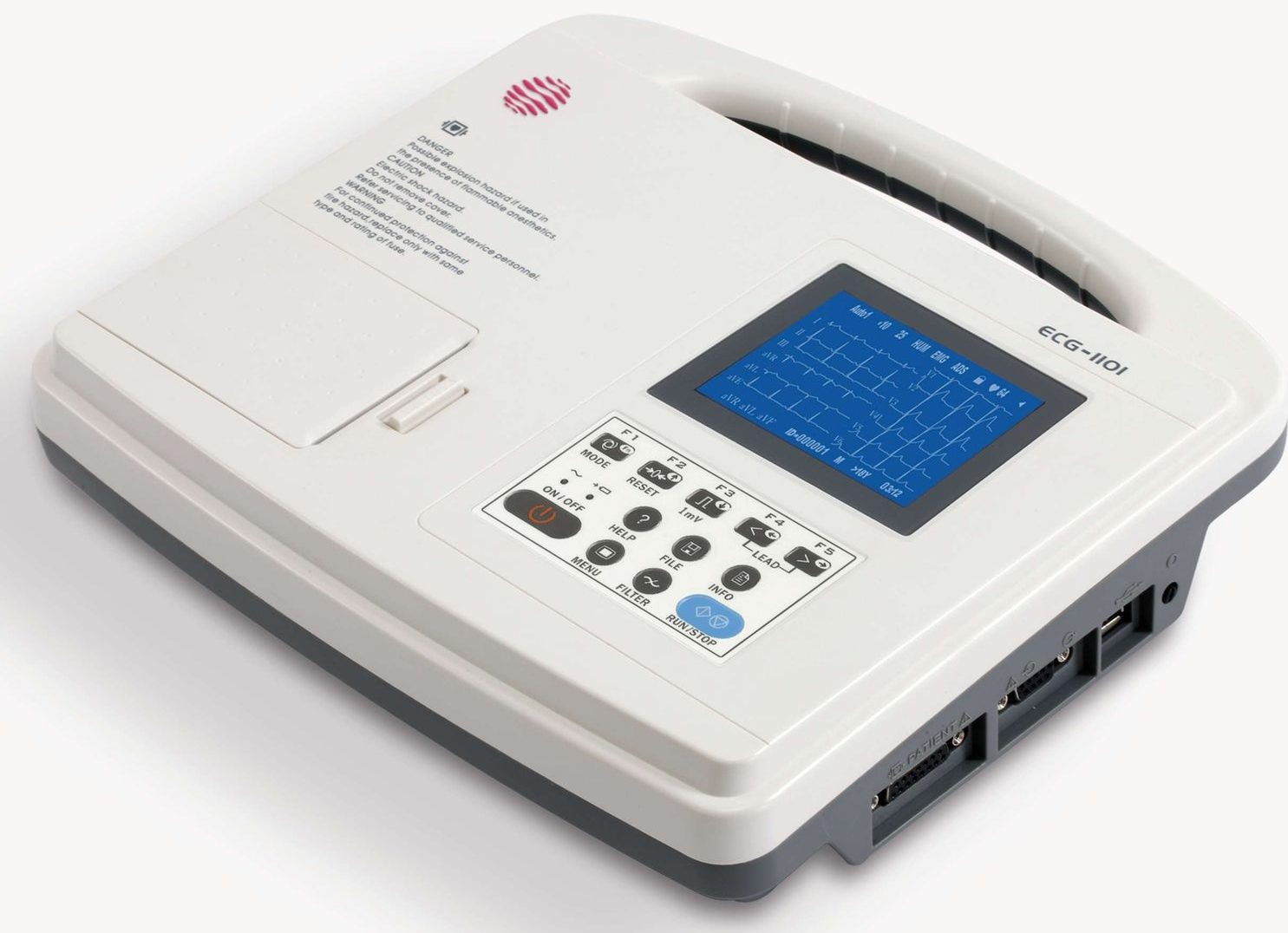
Product of the Chinese company Shenzhen Carewell Electronics.Single-channel cardiograph with monochrome LCD screen. The research results are printed on thermal paper with speeds of 5,10,25 and 50 mm / sec. The device operates in manual and automatic mode, registers the patient's heart rate in the range from 20 to 215 beats per minute. Special filters minimize the impact on the AC cardiogram and keep the isoline from distorting drift. The device, measuring 288x204x60 mm and weighing 2.7 kg, is compact enough for use at home. Average price: 27,800 rubles.
Advantages:
- six speeds of broaching thermal paper;
- 12 assignments;
- Ability to work from the network and battery;
- compact size;
- the device is Russified.
Disadvantages:
- connection to a PC is an option, paid additionally.
4.Edan SE-1
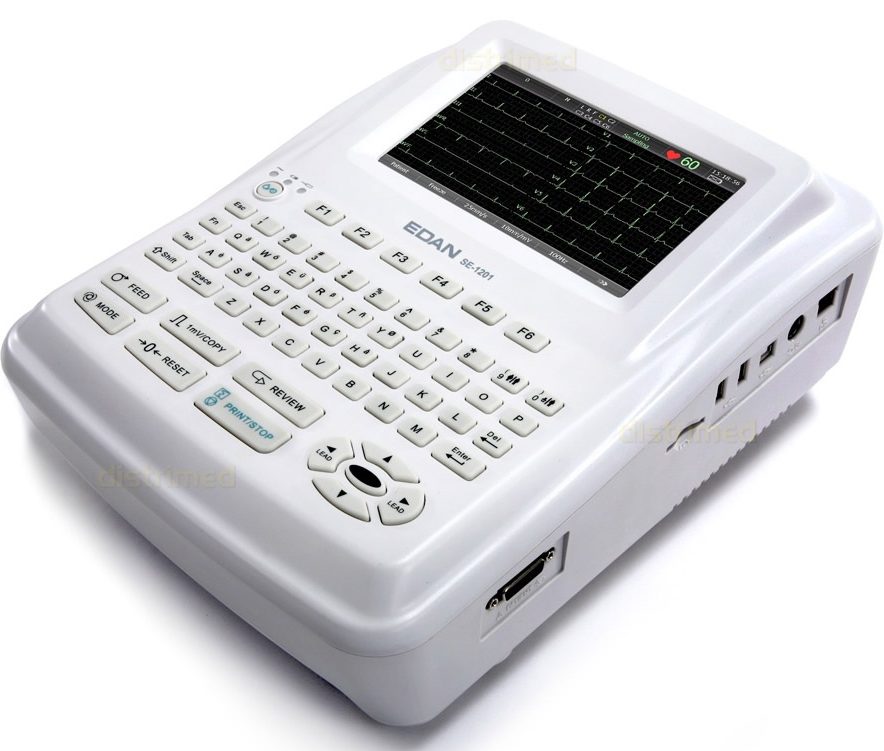
The Chinese manufacturer offers a single-channel cardiograph with 12 standard leads, monochrome LCD display with a resolution of 192x64 pixels. The device is protected from defibrillator discharge, which is especially important for ambulance crews. The heart rate records readings in the range from 30 to 300 beats per minute. The quality of the ECG is ensured by AC filters. The built-in thermal printer delivers 50x30 mm paper at 25 and 50 millimeters per second. The average cost of the device will be 24,000 rubles.
Advantages:
- 12 assignments;
- operating modes - 4 automatic + manual;
- the baseline is monitored automatically;
- built-in thermal printer;
- informative LCD display.
Disadvantages:
- low productivity.
3.EKZT-01-R-D
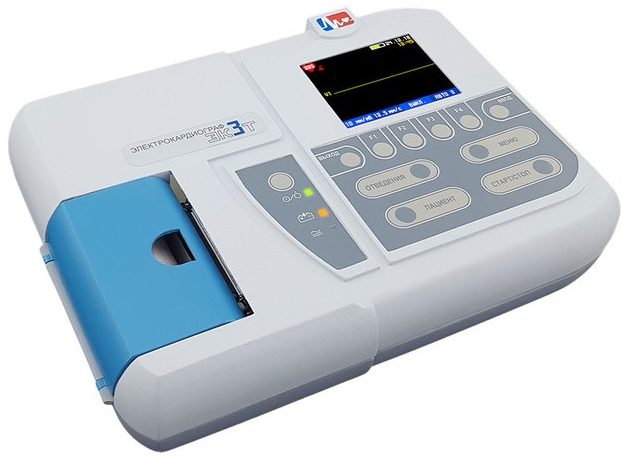
The manufacturer LLC NPP Monitor (Rostov - on - Don) presented a novelty - a miniature cardiograph that simultaneously records 12 leads. Arrhythmias and extrasystoles detected during the session are registered automatically, with the results being displayed on the LCD display and printed by one, two and three leads. Paper feed speed - 5.10, 25 and 50 mm / s. The device operates from the mains and the built-in battery. The average cost of the kit is 29,900 rubles.
Advantages:
- compact size;
- 12 standard leads + 2 additional;
- informative display;
- strong appearance.
Disadvantages:
- there is no possibility to work with a computer;
- no ECG analysis function.
2.Aksion EK1T 1 / 3-07
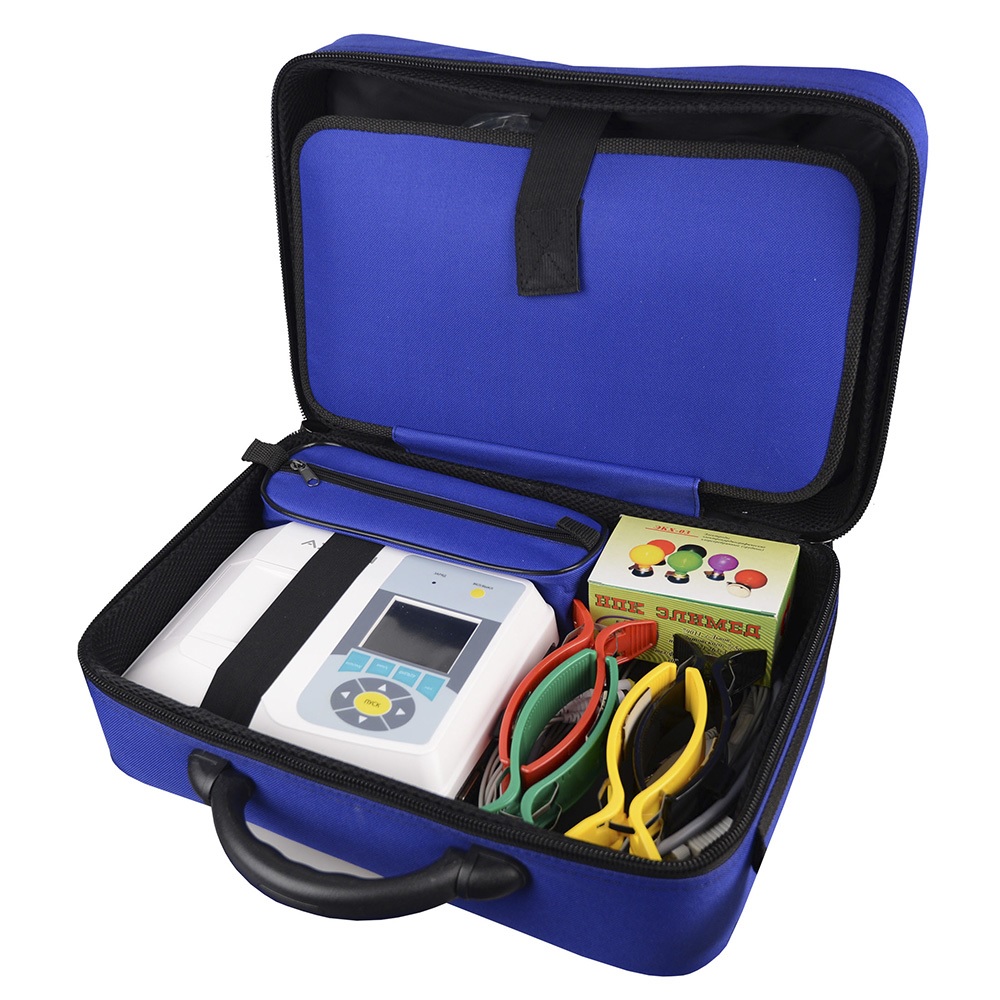
Russian-made products are presented in the review by the EK1T 1 / 3-07 model. The compact, portable single-channel device is especially useful in hospitals during ward rounds, in cardiology and therapists' offices, and in ambulances. The set is placed in a convenient soft bag with combined power supply from the mains and built-in battery. The data of the examination results can be transferred to a PC via a USB cable, having previously saved the file in PDF format.
Cardiograms are printed on the built-in printer and displayed on the LCD. There is a function of sound indication of cardiac activity, and the signal level is adjustable. The function of communication with the dispatcher, which is highly demanded in the ambulance brigade, is provided. The display shows information about the battery charge level, the absence of contact of the electrode with the patient's body, and the absence of paper for printing. The average price of the product is 30,750 rubles.
Advantages:
- compact;
- 12 assignments;
- work from the network and battery;
- battery charge for 100 cardiograms;
- informative display.
Disadvantages:
- not identified.
1.Dixion ECG-1001

The first place and the best user reviews goes to the single-channel ECG-1001 electrocardiograph of the Russian company Dixion. A modern digital device, light and compact, it is easy to operate by means of a membrane keyboard. Diagnostic results and additional information are viewed on the LCD. A built-in thermal printer is provided for printing, for rolls of paper 50mmx30m in size, with feed speeds of 25 and 50 mm / s. The built-in battery provides the necessary mobility of the device. The average price of the model is 63,430 rubles.
Advantages:
- compact size;
- light weight;
- membrane keyboard;
- informative display;
- transfer of results to PC;
- will simultaneously process 12 leads.
Disadvantages:
- not identified.
Multichannel ECG
5.Edan SE-1201
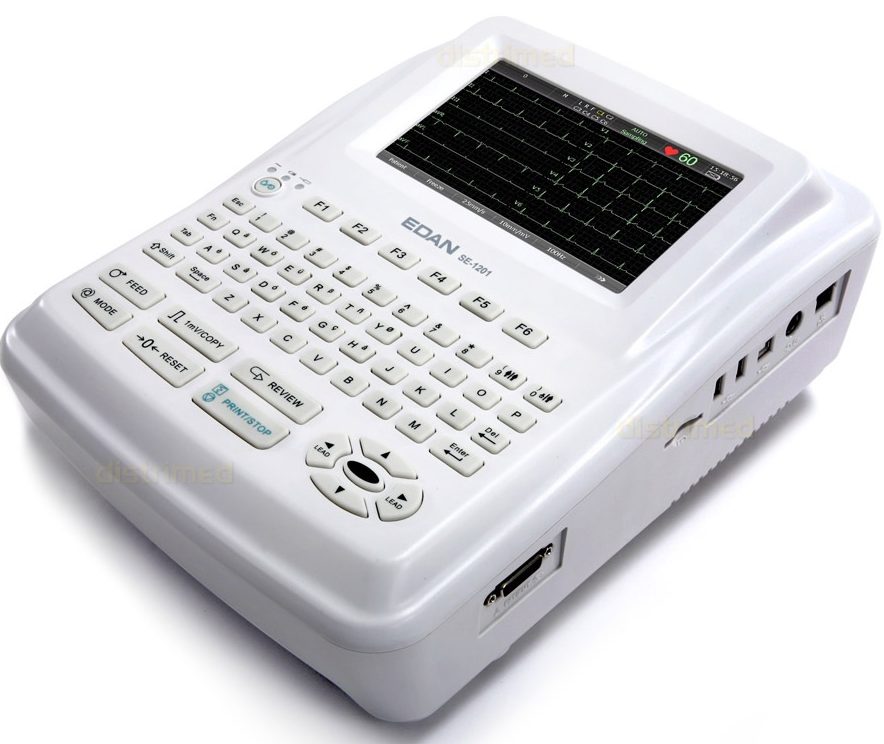
A twelve-channel device made in China, with a color LCD display, measuring 7 inches (17.5 cm) diagonally, on which cardiograms are reflected in twelve leads. Special software automatically decrypts research results. To transfer data to a PC, a removable memory card, USB port, via a local network via Wi-Fi is provided. The management provides for the selection of the patient's gender and age. The built-in memory is enough to store 200 ECGs.
The device is equipped with a built-in thermal printer, for the operation of which there are six feed speeds in the range from 5 to 50 mm / s. The paper is packed in packs of 144 sheets, 210x140 mm in size. The quality of the ECGs is supported by six different filters. The device is powered by mains power and a built-in lithium-ion battery. The average cost of a product is 73,000 rubles.
Advantages:
- compact size;
- large color display;
- wide printer;
- built-in memory;
- work with a PC.
Disadvantages:
- not identified.
4.EK12T Alton-06
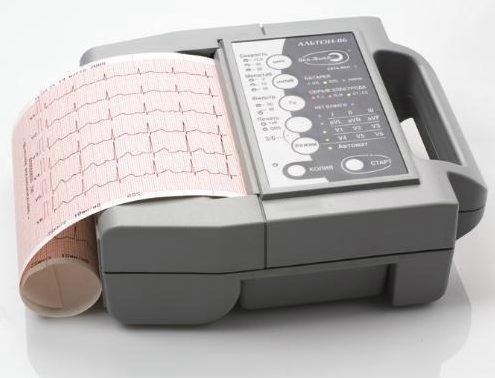
The next number in the review is a 12-channel cardiograph from the leading Russian manufacturer of electronic equipment - LLC Altonika. Model EK12T "Alton - 06" is a new generation of digital medical equipment that combines innovative technologies with stylish design, well-thought-out ergonomics, reliability in operation and a significant work resource.
Convenient keyboard and presence of light indicators makes the control process simple and clear in all modes. The condition of the electrodes, the presence of paper, the battery level and the presence of the mains supply are monitored and displayed on the LCD. The average cost is 83,000 rubles.
Advantages:
- automatic measurements and calculation of cardiogram parameters;
- the ability to change the amplitude and measurement time;
- selection of printout format;
- large amount of built-in memory;
- data transfer to PC.
Disadvantages:
- insufficiently powerful battery.
3.ECG 200L Cardioline
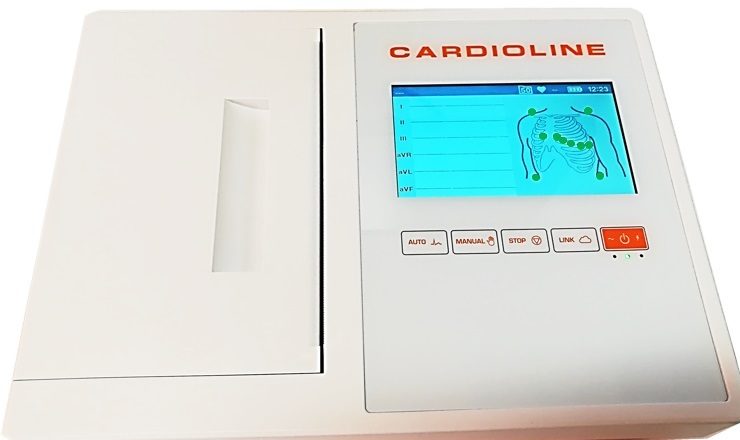
Twelve-channel electrocardiograph of the Italian manufacturer. It is an updated version of the ECG 100L. It differs from the older model in the line with some improvements:
- enlarged sizes;
- doubling the channel capacity;
- increasing the display size to 7 inches.
The ECG 200L model combines innovative technical solutions, mobility and compactness. The device is equipped with a built-in assistant that will always help the user to deal with an unfamiliar situation, assess the correctness of actions. The research results are stored in the built-in memory of the device and printed out by the built-in printer. A special program analyzes the measurement results. The average price of a product is 123,000 rubles.
Advantages:
- multifunctional;
- ergonomic;
- with color touch screen;
- built-in thermal printer.
Disadvantages:
- high price.
2.Schiller Cardiovit AT-102
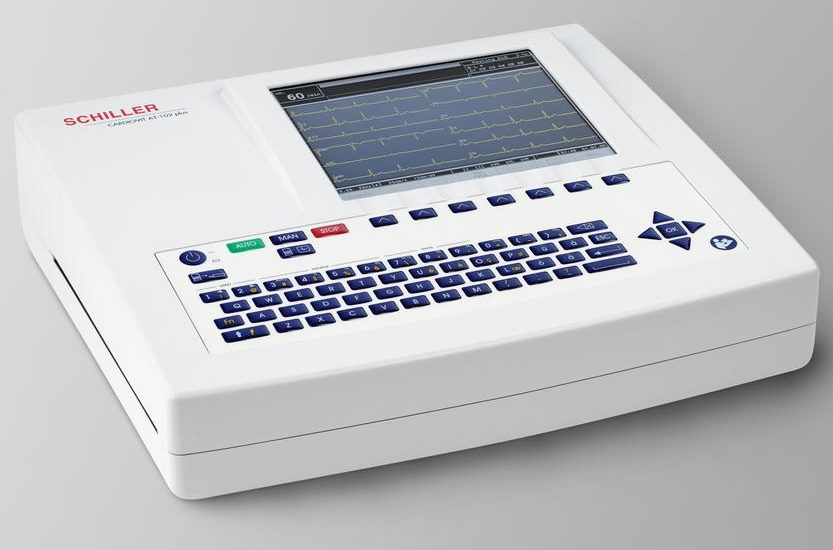
12-channel Swiss-made cardiograph with a large color display (120x90 mm). The device generates ECG reports, with automatic storage of up to 40 pieces, recognizes the heart rate driver, and can function as a spirometer. Convenience and ease of operation is achieved using a full-size alphanumeric keypad and dedicated buttons. The built-in battery provides 4 hours of autonomous operation. During this time, you can make about three hundred ECG printouts or one hundred spirometric measurements.
Studies are verified at rest under stress. It is possible to choose a protocol for measurements during exercise on a bicycle ergometer or a treadmill, or to formulate a new one. The printing device is equipped with a high-resolution thermal head: 8 points in amplitude by 40 in the isoline. The device can transfer data to a PC and communicates with an external printer to print results on plain A4 paper.An informative display will show the current time and date, power source, battery charge level. The average cost of the device is 206,154 rubles
Advantages:
- sensitivity adjustment in manual and automatic mode;
- digital filtering of sinusoidal noise from the AC mains;
- the presence of visualization of 12 leads;
- indication of additional data on the display.
Disadvantages:
- the price is not for everyone.
1.Fucuda FX-8222
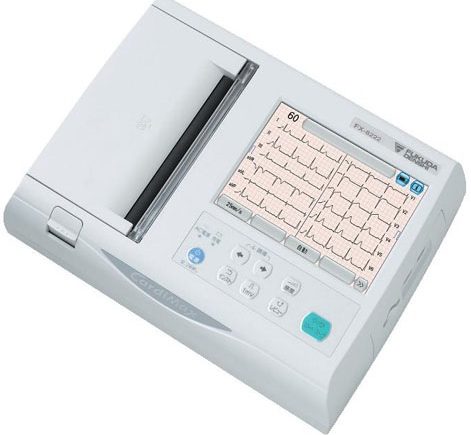
Modern 6-channel innovative device for electrocardiographic studies from a famous Japanese manufacturer of medical equipment. Combination of high functionality with ease of use and compactness. Equipped with a clear and bright LCD display, simple and intuitive operation.
The finished cardiogram is analyzed by a special program. As a result, the user receives information about the state of his cardiovascular system and recommendations for the prevention of deviations. To transfer data to a PC, there are connectors for connecting the device to a local network, an SD card and a USB port. The average price is 235,960 rubles.
Advantages:
- re-measurement function "rewind";
- ECG analysis (optional);
- color display;
- indication of the current state of the device, date, time;
- function of reading cards and barcode;
- data exchange with a PC.
Disadvantages:
- very high price.
The human heart, during the time allotted to it, bears all the load that falls to our body: physical effort, harmful working conditions, excess weight, excessive passion for alcohol and tobacco. When, already fairly worn out, it starts to fail, the quality of life decreases significantly. It is better to prevent such an outcome.
For this, there is such a device as an electrocardiograph, which can determine the state of the heart within a few minutes, issue some recommendations to the user, and make him consult a cardiologist in time. The editors of the site hopes that our review will answer most of the questions that arise when buying an electrocardiograph for the home and help not to make mistakes when choosing the right model.












